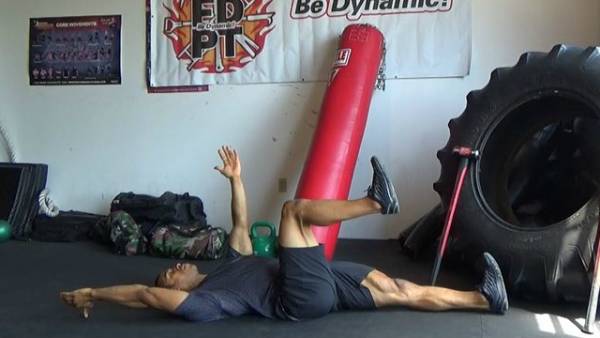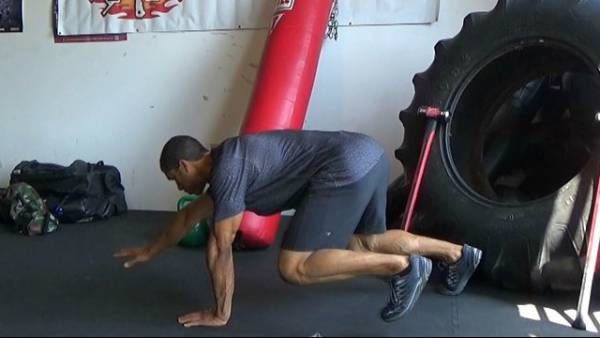Lifting is a valuable element of establishing fundamental strength, performance, and health. But what if your training could give you something even greater than that? What if you could continue developing fundamental strength, but in a way that allows you to operate even better in the real world? While lifting is critical, it doesn’t fully meet the challenges we face in our daily lives.
As a trainer for firefighters and non-firefighters alike, it has been my pleasure to help people learn how to train for the real world. While the specific demands and levels of urgency may be different for firefighters and non-firefighters, the principles are the same. It doesn’t matter whether it is an overflowing laundry basket, a positive pressure ventilation fan for clearing smoke from a structure, or your backpack; in the real world, we do more than lift. We lift in order to move things to a different location. This continues to be a struggle for people and a source of injury, discomfort, and decreased performance. Thankfully, you can train using incremental skill development to progress into efficient carrying.
Secure Single-Leg Footing
Observe people when they are walking. Many times, they are in a forward lean, with their center of gravity in front of their base of support. This isn’t walking. This is falling and catching yourself with the leading leg. This is a common cause of slips and falls in general, but becomes a tremendous hazard when you go into carrying. When carrying, your center of gravity becomes combined with the object you are transporting. Consequently, your gait and stride is severely impacted and can have a detrimental impact.
While there are several pieces to why you may lean forward, one of the most immediate you can address is your ability to maintain your balance over a single point of support. Developing secure, single-leg footing will train your body to stay upright. You can do this by becoming comfortable standing on one leg for an extended period of time, using the following cues:
- Use your entire foot: Grip the floor with your toes and drive your heel into ground. Minimal shoes or bare feet will be helpful.
- Soften your knees: This will encourage greater posterior chain utilization.
- Stand tall: This will allow your body to become secure over the foot.
When done correctly, your ears, shoulders, hips and feet are aligned in a standing plank. This will allow you to feel your equilibrium over a single point of support in a way that will transfer over to loaded carries later. Practice until you are able to sustain this for 60-90 seconds. Then you can progress further to resist external forces. This comes in the way of leg swinging.
Leg swinging is a great way to train your body to be secure under dynamic interference. Stand upright on a single leg, then allow the other leg to swing freely. This will create resilience in the endurance and reaction ability of the stable leg. As you progress even further, you can add in the arms to continue resisting the momentum that naturally occurs from the motion you create.
Active Hip Stability: Kneeling Around-the-Worlds
When you are carrying, you are moving in all three planes of motion. While it may not seem like it, you are working incredibly hard to resist lateral and rotational forces as you move forward. Developing hip stability will play a key role in resisting these forces. One of the best and most accessible ways is to use the Ultimate Sandbag for kneeling around-the-worlds.
- Take a kneeling position and hold the Ultimate Sandbag by the outside handles, pulling them apart as aggressively as you can.
- Drive your hips forward while digging your toes into the ground behind you to engage your posterior.
- Raise your right forearm over your head, stretching the lat on that side, while pulling downward with your left hand, elongating your left upper trap.
- Continue passing the Ultimate Sandbag around your head with maximal tension and resistance.
- Maintain your initial head position until the Ultimate Sandbag is behind your head with your elbows high. Here, pause momentarily, then continue this circular motion until it comes completely around to the front.
- Alternate directions as you do this again.
To progress this movement even further, add a step forward during this motion. It will further increase your hip stability as you resist the adjusting load while removing a point of support.
- Step forward with your left leg into a lunge position as you pass the Ultimate Sandbag over the left side of your head.
- Once it is behind you, hold this position with the same maximal tension, continuing to pull the Ultimate Sandbag apart.
- Return to the starting position by reversing the path of the bag and returning the front leg to the kneeling position.
- At this point, switch sides and switch legs.
Rotary Stability: Dead Bugs and Crawling
The ability to resist rotational forces is imperative. While the kneeling around-the-worlds do work on this, you can do even more through crawling. Crawling is irrefutably a foundational skill. As a firefighter, crawling is a skill we use at nearly all major structure fires. In fact, three years ago, crawling literally saved my life. Are you training this fundamental skill? The good thing is that there is a very easy-to-follow template to restore this skill and strengthen your core stability to resist rotational forces.
Dead bugs are a great way to train your body to move in a contralateral and stable fashion while creating intraabdominal forces using the ground as external cueing.
- Lie on the ground with hands extended above your shoulders and knees bent above your hips.
- Extend your right arm behind and left leg simultaneously.
- If you feel your low back begin to arch, draw your belly button into the ground while tucking your hips. This will provide greater security in your spinal alignment as your move into carrying.

To progress this pattern, move into hand-foot crawling. You will have to maintain that same core stability while resisting rotational forces as you reduce your points of support from the ground. This will encourage you to learn to stabilize your spinal alignment as you move forward.
- Assume a quadruped position with all four limbs on the ground.
- Lift your knees from the ground.
- Once in a secure, solid position with knees under hips and hands under shoulders, move forward in a slow and controlled fashion.
- Continue this for a designated number of strides.

Train Your Body for Heavy Carries
At the end of the day, carrying is something that we need to be able to do. However, there are many people who do it in everyday life inefficiently, in a way that may lead to decreased performance, discomfort and even injury. You can build a solid foundation to carry heavy loads by establishing secure footing using leg swings, stable hips with kneeling around-the-worlds, and rotary stability with dead bugs and crawling.
Want to train like a firefighter? Contact me for more programming strategies.






